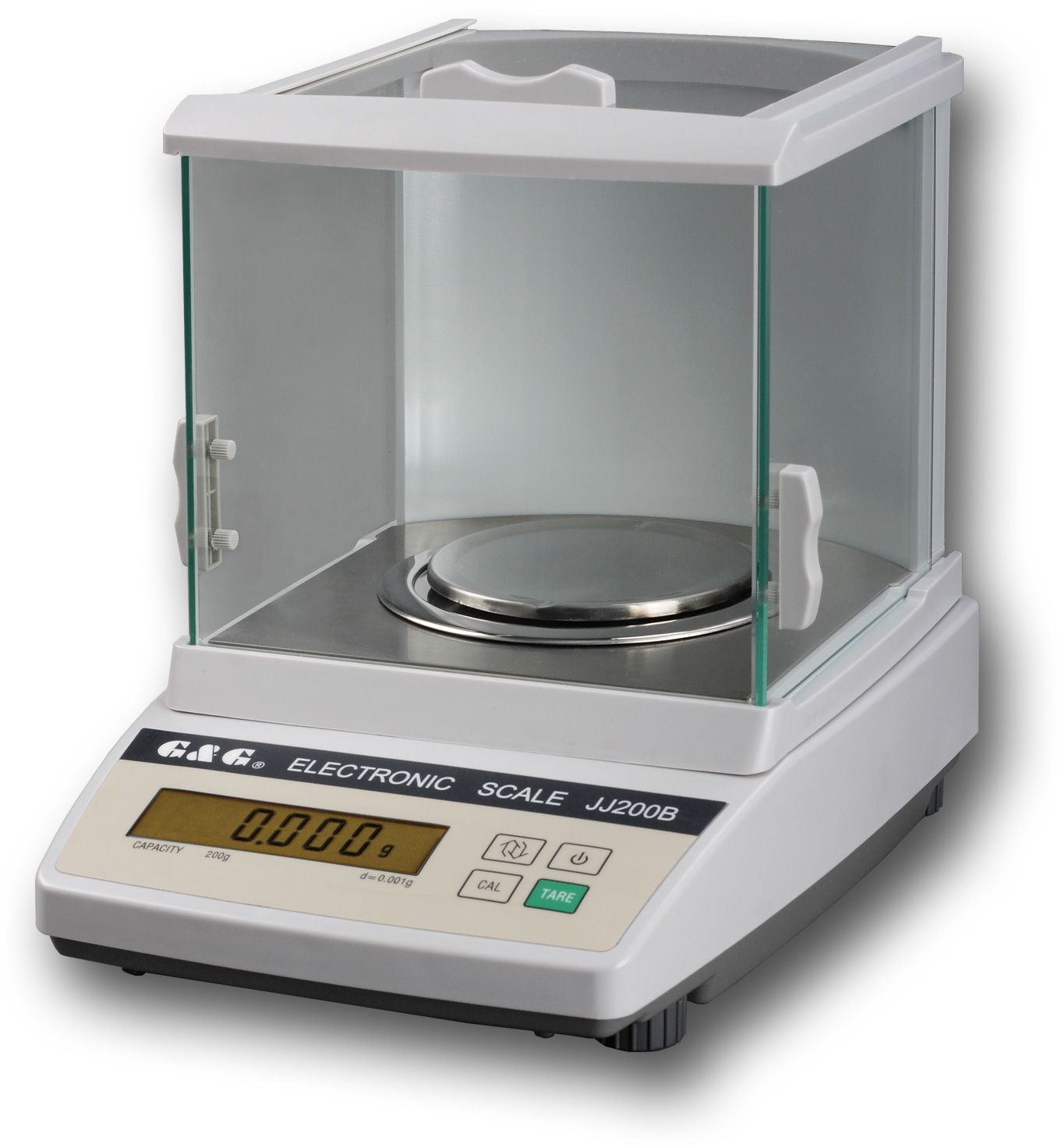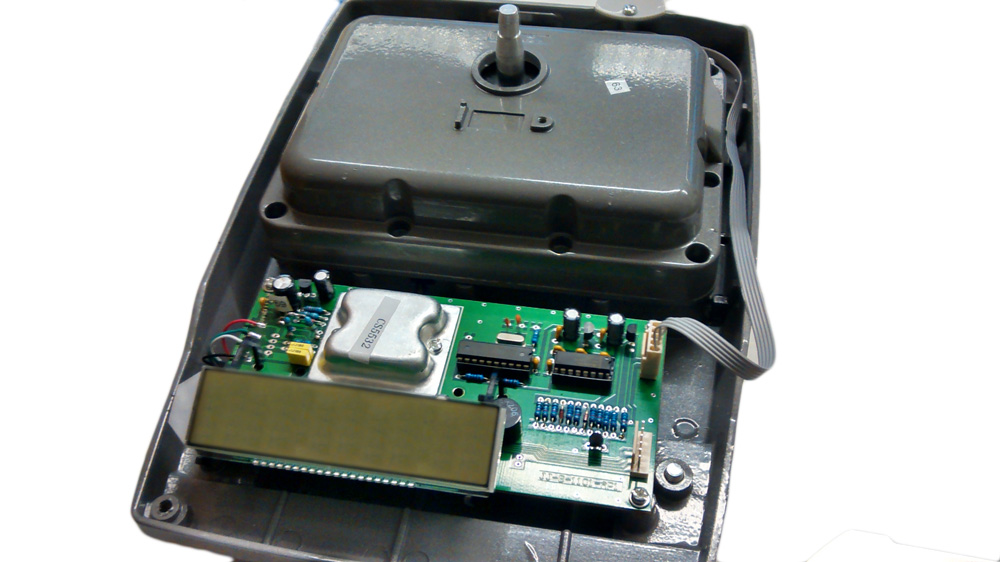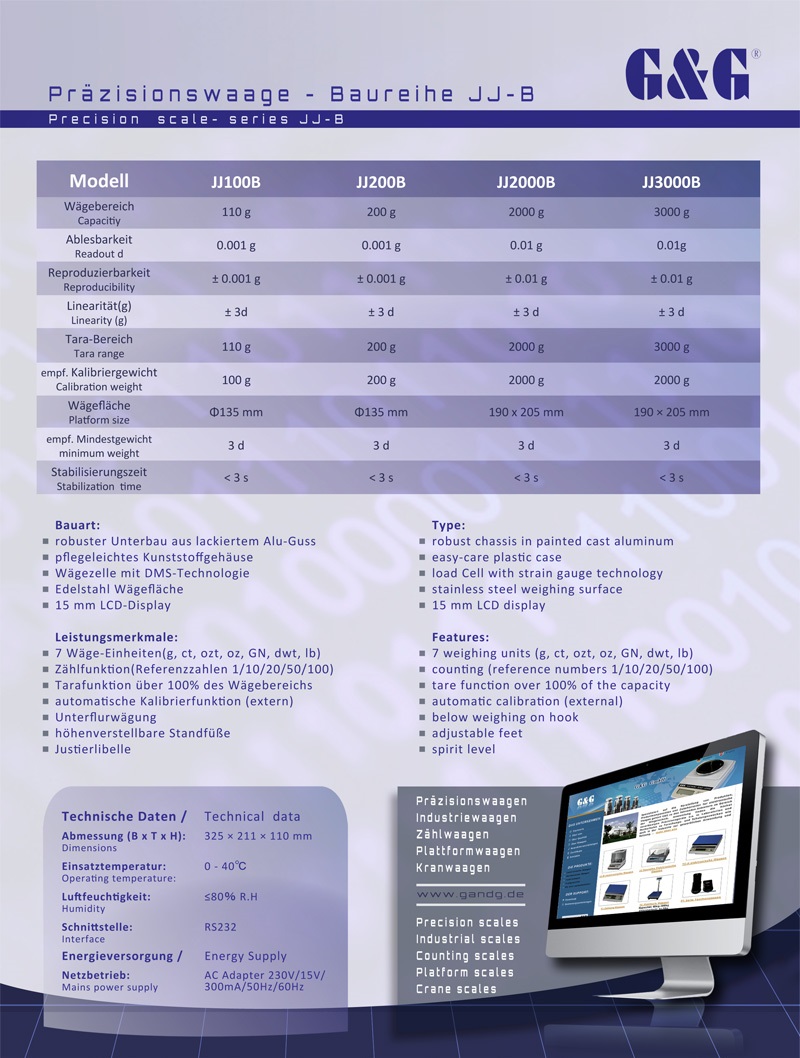Model series JJ-B

Our standard laboratory balance: The readability of up to 300,000 individual measuring steps is our current limit with DMS technology.
In the versions with 0.01g steps, the scale is supplied with a 170 * 195 mm weighing surface.
The finer versions with 0.001g have a round weighing surface under a large glass draft Shield.
Functions:
7 weighing units (g, ct, ozt, oz, gn, dwt, lb), counting function, tare function, external adjustment process.
Settings:
Sensitivity and vibration filter adjustable, when increased, stable results even under adverse ambient conditions, when deactivated during dosing, fast response time.
Type of construction:
Robust base made of lacquered cast aluminum, easy-care, insensitive plastic upper part Platform load cell (stretch marks) in an extra aluminum housing for shielding from possible malfunctions Stainless steel weighing surface on metal support, 15 mm LCD display
Scope of delivery:
Instructions in German + English, power supply unit, test weight.
Shielding
Under the white upper shell made of impact-resistant plastic, above the most important components, the load cell and the "evaluation electronics", there is a capsule made of thick cast aluminum to protect them from interfering radiation.
You probably know the effect from a radio that you put a cell phone next to and call. The radio waves are normally emitted by the mobile phone's antenna, received by the transmission mast a few kilometers away, and the resulting electronic signals are converted into a conversation.
The radio radiation also affects the antenna of the radio and generates electrical signals there as well. There is an audible crackling in the loudspeaker.
A scale does not have an antenna, of course, but this electrical radiation affects all conductive components such as cables and sensors in all electrical devices.
With most devices this is not a problem, with digital measuring devices the actual measurement signal can be falsified. In addition, the evaluation electronics of a precision balance must of course inevitably work more sensitively than a receiver on the radio.
In a kitchen scale that works with 3kg / 1g, for example, the scale has such large areas between the individual measuring steps that a malfunction is unproblematic.
Scales that calculate 3kg in 0.01g steps, i.e. 100 times as fine, also react 100 times as sensitive to disturbances.
In this area, strong radio radiation from e.g. a telephone is no longer required, the scales can be disturbed by all devices that build up an electrical field. This is especially true for devices with powerful capacitors or motors. In the laboratory area, this includes centrifuges, shakers, magnetic stirrers or the power supplies of other devices.
In the case of scales without shielding, this interference is only filtered out using software. The measurement is artificially extended to a few seconds and a mean value is formed during this time. If a disturbance occurs during this time that would cause a "cracking" sound on the radio, you will not see much of it in the display. Vibrations on the table or radiation that can be heard like "noise" on the radio are filtered out by a vibration filter. Both together help against other disruptive influences and make it possible to weigh a switched-on mobile phone on a shaky table in a room with a strong draft on inexpensive scales.
Both together (interference and filter) only become problematic if you do not weigh solid objects but dose them on the scales. The low sensitivity with the mean value calculation means that the display changes only slowly when adding very small amounts. The vibration filter would even completely block a minimal change (e.g. if 0.998g are applied and you want to add another 0.002g). Only after adding more mass does the scale "jump" to a new value, e.g. 1.002g.
With all professional scales and in some cases also for cheaper scales such as the PLC or KF (without any shielding, pure plastic housing), we already offer the option of setting the scales to dosing mode and completely deactivating the filters. Now every signal received by the load cell is displayed, but also every fault.
If you want to add a tiny amount again to 0.998g until the scale shows 1,000g in the display, you may have dosed the missing 2 mg. Or it may be that you have added 1mg and another mg is displayed incorrectly because the neighbor receives a call.
Our series JJ-A and JJ-B have a closed area to shield this radiation as well as possible from the measuring electronics. At the bottom, the block is permanently installed with the cast aluminum substructure. Only at the top there is inevitably a small hole through which the load cell is connected to the weighing surface.
This block makes up about half of the case.
On the "mainboard" that you see in the front of the photo, it is only about non-critical areas such as the control of the display, the keyboard or the RS232 interface.

Data sheet
